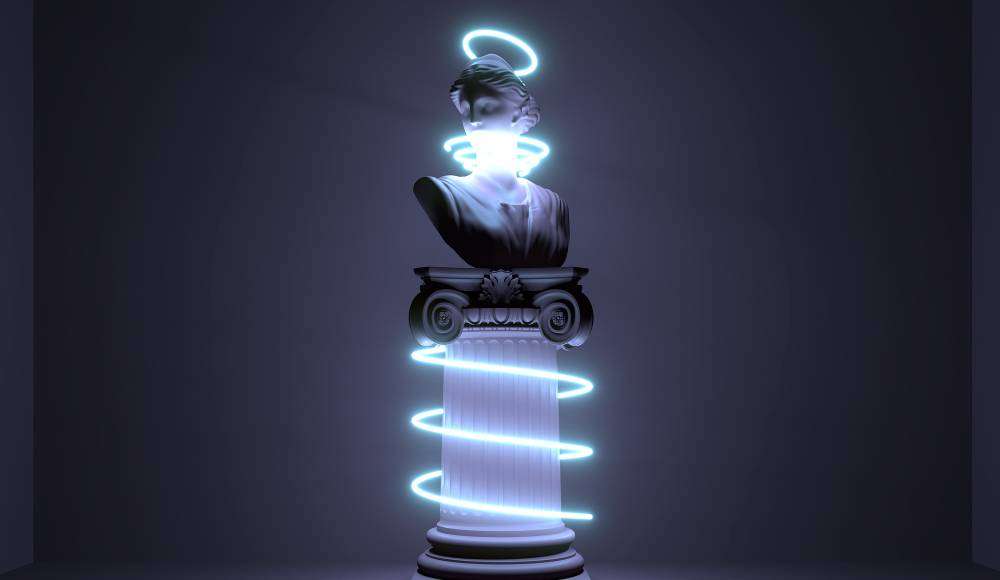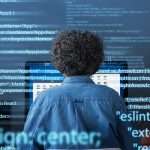
The world of Non-Fungible Tokens (NFTs) and the Metaverse has been gaining massive traction over the last few years. With the rise of blockchain technology, digital art, virtual reality, and decentralized ecosystems, NFTs and the Metaverse have emerged as key pillars of the digital future. These innovations are not only reshaping the way we view digital ownership and online interaction but also presenting new opportunities and challenges for IT professionals. This blog will dive deep into what NFTs are, their impact on the Metaverse, and how IT professionals can position themselves in this rapidly growing space.
Hire a Developer
What Are NFTs?
Non-Fungible Tokens (NFTs) are unique digital assets that represent ownership or proof of authenticity of a specific item or piece of content, typically built on blockchain technology. Unlike cryptocurrencies such as Bitcoin or Ethereum, which are fungible (meaning one unit is interchangeable with another), NFTs are non-fungible — each token is unique and cannot be exchanged on a one-to-one basis.
NFTs can represent a wide variety of digital assets, including:
- Digital Art: Images, illustrations, and animations created and sold as digital collectibles.
- Music: Audio tracks, albums, or sound clips, which can be tokenized and sold as NFTs.
- Videos: Short clips, GIFs, or full-length videos that are tokenized and sold.
- Virtual Goods: Clothing, accessories, or even real estate in virtual worlds or games.
- Collectibles: Digital trading cards, virtual pets, and other virtual items.
- Domain Names: Blockchain-based domains (like .eth domains) can be traded as NFTs.
NFTs rely on blockchain technology, typically the Ethereum blockchain, to establish proof of ownership and create verifiable, immutable records of the transactions. However, other blockchains like Solana, Flow, and Tezos are also becoming popular in the NFT space.
Key Characteristics of NFTs:
- Indivisibility: NFTs cannot be divided into smaller parts. You either own the entire NFT or none of it.
- Provenance: Ownership history is fully transparent and verifiable, which helps prevent fraud.
- Interoperability: NFTs can be transferred across different platforms, such as digital marketplaces or virtual worlds.
- Scarcity: Most NFTs are created with a limited supply, increasing their rarity and value.
What is the Metaverse?
The Metaverse is a collective, virtual, shared space that encompasses a variety of digital experiences, including virtual reality (VR), augmented reality (AR), online gaming, social platforms, and decentralized digital worlds. In simple terms, it is a space where users can interact with each other and digital objects in real-time through avatars, as well as engage in economic, social, and entertainment activities.
Popular metaverse platforms include:
- Decentraland: A blockchain-based virtual world where users can buy, sell, and build on virtual real estate using NFTs.
- The Sandbox: A virtual world where users can create, own, and monetize assets and experiences, powered by NFTs.
- Roblox: A gaming platform where users can create games, socialize, and monetize virtual content.
- Horizon Worlds (by Meta/Facebook): A social VR platform that enables users to create and experience immersive worlds.
- Somnium Space: A VR space that allows users to create, explore, and monetize virtual worlds.
The Metaverse aims to provide an immersive, persistent digital experience that mirrors the physical world. In this space, NFTs play a significant role, especially in establishing ownership of virtual goods and assets.
How NFTs Impact the Metaverse
NFTs are fundamental to the Metaverse’s economy, digital identity, and property ownership. Here’s how:
-
Digital Ownership in Virtual Worlds
In the Metaverse, NFTs allow users to own virtual real estate and other digital assets. For example, in platforms like Decentraland and The Sandbox, virtual parcels of land are sold as NFTs, giving users exclusive rights over these assets. This opens up a new frontier in digital real estate, where users can build, trade, and even rent out virtual properties.
-
Avatars and Personalization
Your avatar in the Metaverse can be customized with NFTs. These digital collectibles, such as clothing, skins, or accessories, are tokenized as NFTs, meaning they are unique, owned by the user, and can be bought, sold, or traded. NFTs enable users to express their identity through their virtual representations and create a deeper connection to their digital persona.
-
Play-to-Earn Models
In virtual worlds and games within the Metaverse, Play-to-Earn (P2E) models are becoming prevalent. NFTs are used as in-game assets that players can earn, trade, and sell. For example, players might earn rare NFTs like weapons, skins, or virtual land, which can be monetized outside the game in secondary markets. This creates new economic opportunities for users in the Metaverse.
-
Collectibles and Entertainment
The Metaverse is also a hub for NFT collectibles. Virtual events, concerts, and shows are increasingly being hosted within these virtual spaces, where limited-edition NFTs tied to the events can be purchased as tickets or memorabilia. These collectibles are becoming valuable due to their rarity and connection to memorable experiences in the Metaverse.
-
Interoperability Across Platforms
One of the biggest promises of NFTs in the Metaverse is interoperability. NFTs created on one platform can be used on another. For instance, a digital outfit NFT purchased in one virtual world can be used to dress an avatar in another world, enhancing the user experience and providing seamless cross-platform ownership.
How IT Professionals Can Get Involved in NFTs and the Metaverse
The rise of NFTs and the Metaverse presents a wealth of opportunities for IT professionals, particularly those with a passion for blockchain technology, game development, virtual reality, and immersive digital experiences. Here’s how IT professionals can get involved:
-
Blockchain Development
Blockchain is at the core of NFTs, so IT professionals with skills in blockchain development are highly sought after. Ethereum is the dominant blockchain for NFTs, but other blockchains such as Solana, Flow, and Tezos are also gaining traction. Developers can get involved by:
- Building NFT marketplaces: These are platforms where users can buy, sell, and trade NFTs.
- Developing NFT standards: Understanding and working on NFT token standards (e.g., ERC-721, ERC-1155) and their implementation.
- Smart contract development: Writing the code that governs the creation and transactions of NFTs.
-
Metaverse Development
Metaverse development involves creating virtual environments and interactive experiences. IT professionals with expertise in game development, 3D modeling, augmented reality (AR), and virtual reality (VR) are key contributors to the Metaverse. Opportunities include:
- Creating virtual worlds: Designing and developing virtual spaces, interactive environments, and digital assets within the Metaverse.
- Building immersive experiences: Developing VR/AR content that immerses users into the Metaverse and enhances their experience.
- Game development: Building games that integrate NFTs and create Play-to-Earn (P2E) models within the Metaverse.
-
Security and Auditing
With the rise of NFTs and the Metaverse, ensuring the security of these digital assets is paramount. IT professionals with expertise in cybersecurity and smart contract auditing are needed to safeguard against hacks, fraud, and vulnerabilities in blockchain protocols. You can help by:
- Auditing smart contracts: Ensuring smart contracts are secure and free of vulnerabilities before they go live.
- Building secure platforms: Designing NFT marketplaces and Metaverse platforms with robust security protocols.
-
User Experience (UX) and Interface Design
As the Metaverse is all about immersion, UX/UI design plays a crucial role. IT professionals with skills in designing intuitive and engaging digital experiences are essential for building user-friendly interfaces within virtual worlds. Opportunities include:
- Designing user interfaces: Creating interfaces for users to interact with NFTs and Metaverse environments.
- Improving accessibility: Ensuring that the Metaverse is accessible to a wide range of users, including those with disabilities.
-
Digital Asset Management
As NFTs are unique digital assets, IT professionals can specialize in helping users and businesses manage these assets. This could involve:
- Asset tracking: Developing tools to track ownership, provenance, and value of NFTs.
- Decentralized storage solutions: Implementing storage systems that securely house digital assets and NFT metadata.
Conclusion
NFTs and the Metaverse are rapidly changing the landscape of digital ownership, entertainment, and interaction. These technologies are creating new avenues for individuals to engage with virtual worlds, collect unique digital assets, and participate in immersive digital economies. For IT professionals, the rise of NFTs and the Metaverse presents exciting opportunities to be part of a transformative industry, from blockchain development and security to virtual world creation and game development.
As NFTs and the Metaverse continue to evolve, IT professionals with skills in blockchain, virtual reality, game design, and cybersecurity will play a crucial role in shaping the digital future. Whether you’re interested in developing NFT platforms, building immersive metaverse worlds, or ensuring the security and scalability of these systems, the potential for growth and innovation in this space is vast.













